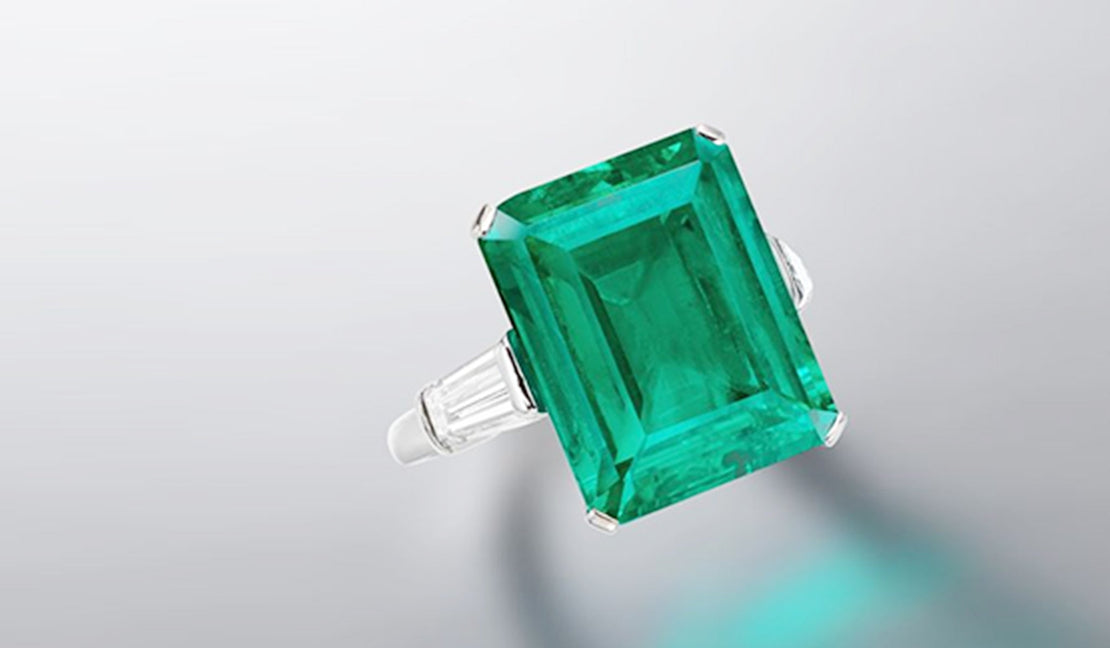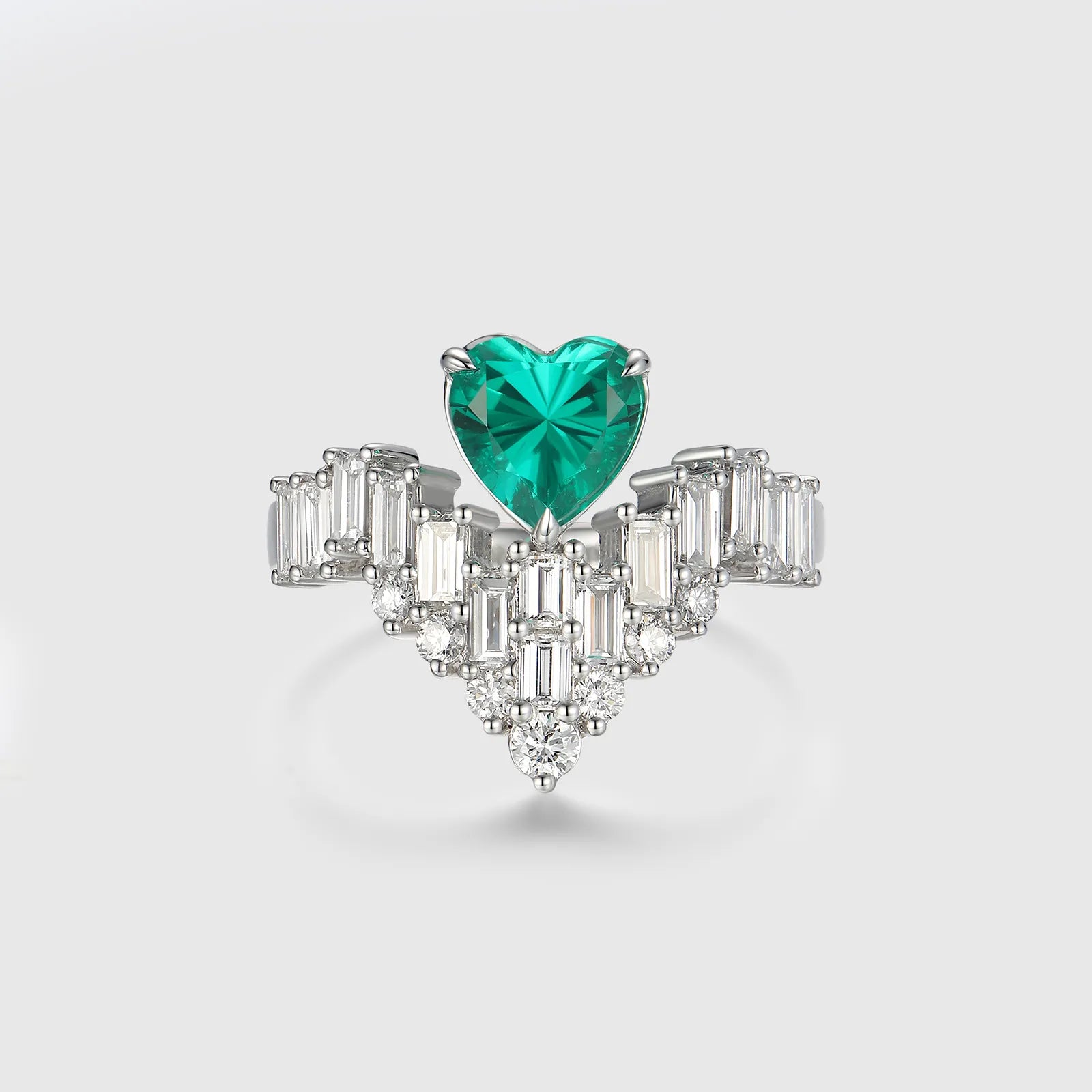A Smarter, More Sustainable Way to Wear Emeralds
The appeal of the emerald is timeless, but people today have a new option to think about. Lab-grown emerald rings are a great choice compared to mined stones. They offer a beautiful gem that is both affordable and ethically made.
Get the Look You Love at a Better Price
The biggest difference for many people between lab-grown and natural emeralds is the price. A natural emerald can cost between 3 and 10 times more than a lab-grown one of the same size and quality. Prices for natural stones vary widely, going from less than $100 per carat for low-quality gems to over $100,000 per carat for the best ones. But high-quality lab-grown emeralds usually cost between $150 and $1,000 per carat.
This price gap opens up new options for buyers. It is about getting the most beauty and quality for your money. For the same amount of money, you can often get a much bigger and clearer lab-grown stone instead of a small natural one with flaws.
The value of a natural emerald is tied to its rarity and investment potential, as its supply is limited. In contrast, a lab-grown emerald's value comes from its immediate beauty and ethical creation, as it does not have the same rarity or resale value.
Emerald Rings Without the Mining or the Guilt
Beyond saving money, lab-grown emerald rings have big benefits for people and the planet. Mining natural emeralds consumes significant resources like water and energy and can cause a lot of harm to the environment. Mining operations often involve:
- Deforestation and Ecosystem Destruction: Clearing land for mines destroys homes for plants and animals.
- Uses a lot of resources: The process uses a lot of water and energy.
- Water Pollution: Bad chemicals like mercury or cyanide, used for mining, can pollute local water.
- Big carbon footprint: Shipping gems around the world creates a lot of pollution.
In contrast, lab-grown emeralds are made in controlled labs with a much smaller environmental footprint. This process also avoids the human rights issues sometimes linked to mining, offering a conflict-free guarantee.
Tough Enough for Daily Wear, Elegant Enough for Any Occasion
People often worry that emeralds are too fragile. But the way lab-grown emeralds are made helps with this problem. These modern gems are tougher, and when they are put in good settings, they are great for wearing every day.
Fewer Flaws, Stronger Stone
A gem's durability is about both hardness and toughness. On the Mohs scale of hardness, both natural and lab-grown emeralds are 7.5 to 8, which is strong for jewelry.
The big difference is inside the stone. Natural emeralds almost always have internal flaws, called "jardin," which are weak spots that make the stone more likely to chip or break.
But lab-grown emeralds are made in stable, controlled labs. This process creates a structure with far fewer internal flaws. The resulting gem is stronger than a natural emerald with many flaws, making it a better choice for daily wear.
Ring Settings That Help Protect Your Emerald
Lab-grown emeralds are tougher, but the ring setting adds another important layer of protection. Some designs are made to protect the gem.
- Bezel Setting: This is seen as the safest choice. A bezel setting has a thin metal rim that goes all the way around the emerald's edge. This protects its edges from bumps, so it is great for people who are active.
- Halo Setting: A circle of smaller diamonds or gems goes around the center emerald. This "halo" acts like a cushion, taking the hit instead of the main stone. A hidden halo gives support from below.
- Cathedral Setting: The sides of the band curve up to hold the gem. This makes a supportive base that lifts and protects the stone from the sides.
- Prong Setting: This style shows more of the gem, but it is the least safe style. For an emerald, it is a good idea to use at least four to six prongs made of a strong metal like platinum to hold the stone safely.
See the Pure Green Glow of Lab Emeralds
Making emeralds in a lab gives a lot of control over how they look. This leads to gems that have pure color and are very clear. This kind of perfection is very rare and costs a lot of money in natural stones.
Bright Green You Can Count On
The classic emerald color is a bright, pure green, sometimes with a little blue in it. This famous color comes from small amounts of certain elements, mainly chromium and vanadium. When a natural emerald forms, these elements can be spread out unevenly, which can cause the color to be patchy in one stone.
In a lab, scientists can add the right amount of these coloring elements in a stable setting. This control allows them to make emeralds with very even, deep color. This gives you a choice: the unique character of a natural stone, or the perfect color made by science.
Clearer Than Nature Could Make
Clarity, or not having flaws inside, is another area where lab-grown emeralds are better. A natural emerald without any flaws you can see is very rare and costs a lot.
The controlled lab environment, however, is made to create fewer of these internal flaws. So, lab-grown emeralds usually have very high clarity and often look "eye-clean" or almost perfect.
Also, natural emeralds are often treated with oils or resins to hide flaws. This treatment is not permanent and needs special care. High-quality lab-grown emeralds do not need these treatments, which makes them simpler to own and maintain.
Find Your Perfect Style in Our Collection
The great quality and good price of lab-grown emeralds have made them popular in many ring designs. From big, bold rings to small, meaningful ones, these gems can be used to show off your personal style.
Big, Bold Emeralds That Turn Heads
Statement and cocktail rings are made to be seen. They are known for being big and bold. The lower price of lab-grown emeralds helps a lot here. It lets people use large, bright emeralds to get a fancy look that would cost too much with natural stones.
Toi et Moi Rings That Tell a Love Story
The "Toi et Moi" ring means "You and Me" in French. It is a style with deep meaning that has two main gems set next to each other. It stands for two people coming together. Common designs often mix an emerald-cut stone with a different shape, like a pear or oval. The steady quality of lab-grown gems is great for making beautiful, matching pairs.
Sculptural Rings That Feel Like Fine Art
Besides common designs, lab-grown emeralds are used in many unique and artistic rings that look like small sculptures. These styles focus on being different and creative and include:
- Nature-Inspired Designs: Bands that look like twisting leaves or branches.
- Geometric and Art Deco Styles: Rings that use clean lines and bold shapes.
- Asymmetrical Clusters: Settings that mix different gem shapes and sizes for an artistic look.
- East-West Settings: A modern style that places a rectangular stone sideways on the finger.





















